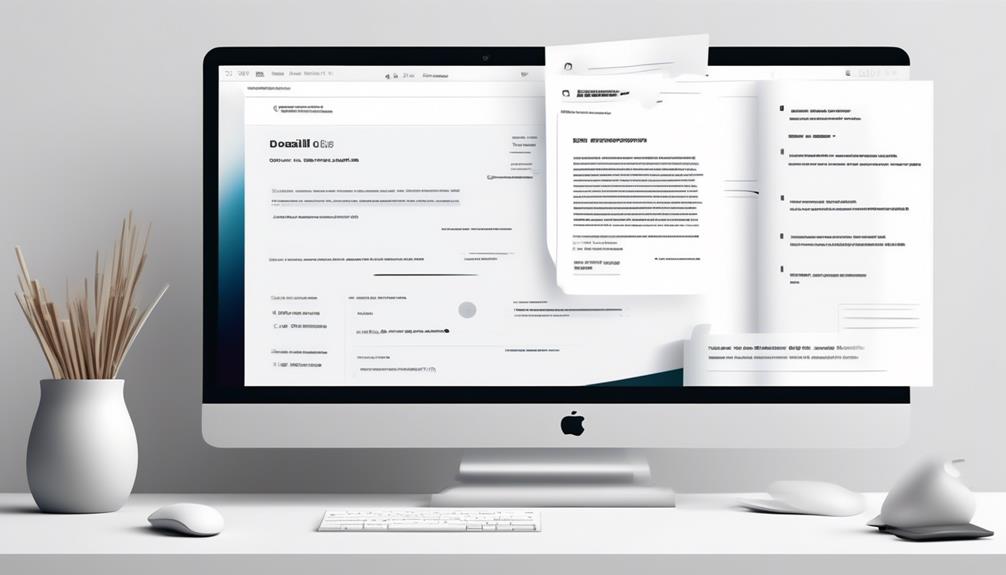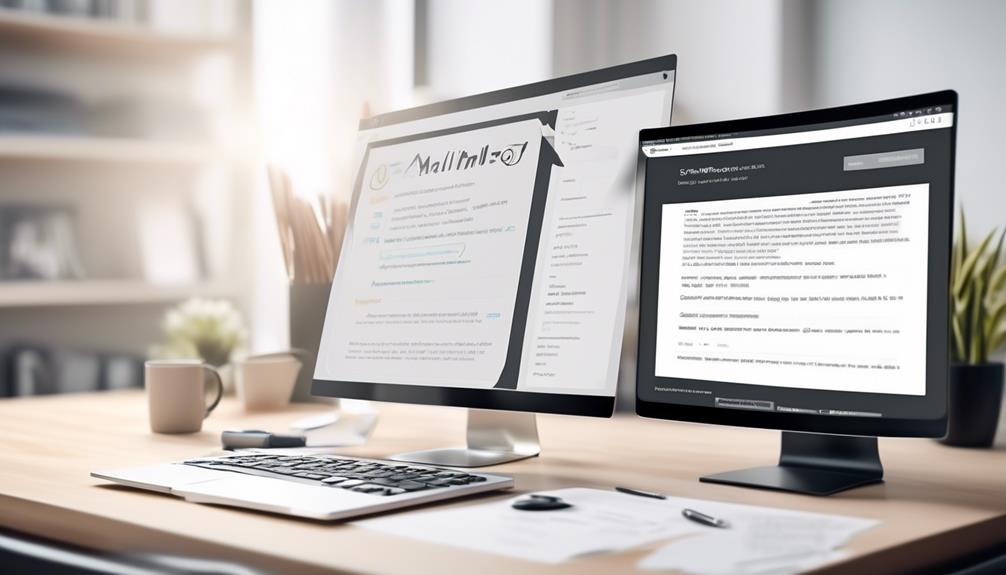Creating the ideal estimate email might feel like a daunting challenge, but worry not, we have everything you need.
In today's competitive business landscape, sending a compelling estimate email can be the difference between securing a new client or being overlooked. So, how do we ensure our estimate emails stand out from the crowd?
Stay tuned as we uncover the key elements to crafting an effective estimate email that will captivate your recipients and increase your chances of success.
Key Takeaways
- Personalize the estimate email to demonstrate expertise and empathy for the recipient's needs.
- Timing is important when following up on an estimate, send the initial follow-up email 2-5 days after the initial estimate email.
- Handle estimate radio silence by sending a friendly and professional follow-up email after an appropriate time and consider a phone call if the silence persists.
- Prevent estimate ghosting by tailoring follow-up emails, responding promptly to inquiries, maintaining open communication, and offering the chance to review the estimate together.
Crafting an Effective Estimate Email
Crafting an effective estimate email requires a personalized and persuasive approach that demonstrates expertise and empathy for the recipient's needs. When composing an estimate email for a business project, it's essential to review the details carefully and ensure that the content is tailored to the specific requirements of the potential customer.
Our goal is to create a compelling email that not only showcases our professionalism but also addresses the project costs and the unique needs of the recipient. By utilizing a friendly yet professional tone, we can effectively communicate our commitment to exceptional customer service. It's important to encourage the recipient to reply to this email, whether it's to seek further clarification, express interest, or initiate the next steps in the project.
Our expertise in crafting persuasive calls to action will be instrumental in prompting the recipient to take the desired action. Additionally, the email's design should reflect our attention to detail and commitment to excellence, as it plays a significant role in leaving a lasting impression on the recipient.
Timing Your Estimate Follow-Up

After sending the initial estimate email, it's crucial to time your follow-up appropriately to maintain engagement without appearing overly aggressive. Timing is key when it comes to following up on estimates. Here are some important points to consider when determining the timing of your follow-up:
- Send the initial follow-up email 2-5 days after the initial estimate email: This strikes a balance between being prompt and not overly pushy. It shows that you're proactive and interested in the prospect's needs without being too persistent.
- Avoid sending multiple follow-up emails in the same week: Overwhelming the prospect with frequent emails can be off-putting and may lead to a negative perception of your professionalism. It's important to give the prospect space to review the estimate and consider their options.
Handling Estimate Radio Silence
Experiencing radio silence after sending estimates is a common occurrence in business, and it often necessitates a strategic approach to follow-up.
When faced with estimate radio silence, it's crucial to manage client expectations while maintaining professionalism.
After the appropriate time has passed, a friendly and professional follow-up email can be sent to inquire about the status of the price quote.
In this email, it's important to reiterate the value your services or products will bring to the client's project and address any potential concerns or objections they may have.
Creating a sense of urgency by mentioning the importance of staying on schedule and delivering the project on time can prompt a response from the client.
If the radio silence persists after the follow-up email, a phone call to discuss the estimate and the next steps may be necessary.
Keep in mind that an estimate isn't legally binding, so it's essential to maintain a positive and respectful tone throughout the communication process.
Preventing Estimate Ghosting

Navigating through the challenges of estimate radio silence requires a proactive approach. Now we shift our focus to preventing estimate ghosting by implementing strategies to maintain consistent communication with potential clients.
- Personalized Follow-ups: Tailor your follow-up emails to each prospect, addressing their specific needs and concerns. This shows that you value their individual requirements and are attentive to their unique situation.
- Timely Responses: Respond promptly to any inquiries or feedback from potential clients. It's important to make sure they feel heard and that their questions are being addressed in a timely manner.
Business owners should look forward to maintaining an open line of communication with potential clients to prevent estimate ghosting. When sending a new estimate, it's crucial to emphasize that you're available to answer any questions and provide further details. Additionally, offering the chance to review the estimate together can help in ensuring that the client feels comfortable and informed.
Using Email Templates for Service Business
We find that utilizing email templates for service businesses streamlines communication and ensures consistency in our interactions with clients. By using email templates, we can save much time and effort while maintaining a professional and consistent approach.
These templates allow us to present our estimate in a clear and organized manner, ensuring that all necessary details, such as material costs and services, are included. Additionally, using tokens in templates enables us to automatically insert project-specific information, making the process of creating and sending estimates more efficient. This level of customization and personalization gives our clients confidence in our attention to detail and commitment to their specific needs.
Furthermore, the use of email templates makes it easier for clients to take action as the necessary information is presented clearly, prompting them to give us a call or take the next steps.
Frequently Asked Questions
How Do You Write a Professional Estimate?
We write professional estimates by showcasing our expertise, attention to detail, and professionalism. Personalizing each estimate and follow-up email demonstrates our commitment to the prospect and increases the likelihood of conversion.
It's crucial to address common objections, create urgency, and streamline the estimating process to improve win rates. Crafting a professional yet friendly tone, along with a clear call to action, is key to effective estimate follow-up emails.
How Do You Start an Estimate Letter?
Starting an estimate letter involves a captivating introduction to grab the reader's attention. We always aim for a compelling opening that showcases our expertise and professionalism. It's crucial to establish a personal connection and convey a sense of urgency. Our goal is to create an impact from the first sentence, setting the tone for a successful communication.
A well-crafted start can make all the difference in capturing the recipient's interest.
How Do You Give Someone an Estimate?
We give someone an estimate by first understanding their needs and expectations.
Then, we carefully analyze the project requirements and gather all necessary information.
Next, we calculate the costs and consider any potential variables.
Finally, we present the estimate in a clear, professional manner, ensuring transparency and addressing any questions or concerns.
This approach helps us provide accurate and reliable estimates for our clients, fostering trust and confidence in our services.
How Do You Write Estimated Costs?
When writing estimated costs, we ensure accuracy, transparency, and value. We break down each cost, outlining labor, materials, and additional expenses. Our goal is to demonstrate expertise and build trust with clients.
We provide a detailed breakdown, offering a clear understanding of the project's scope and costs. This approach helps clients make informed decisions and builds credibility for our business.
Conclusion
So, next time you're sending out an estimate email, remember to:
- Personalize the email to make the recipient feel valued and important.
- Demonstrate your expertise by including relevant information and showcasing your past successes.
- Ensure a visually appealing design that is easy to read and navigate.
Are you ready to take your estimate emails to the next level and increase your win-rates? Let's make sure your emails stand out and make a lasting impression on your prospects.










